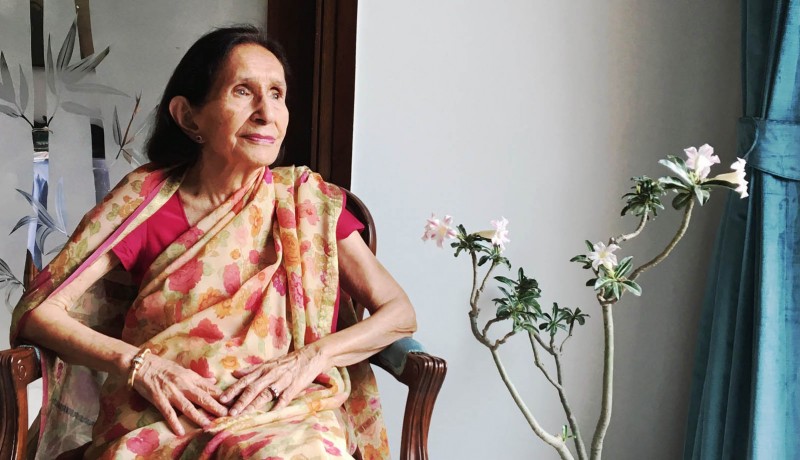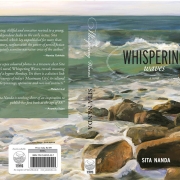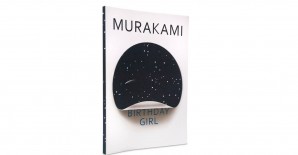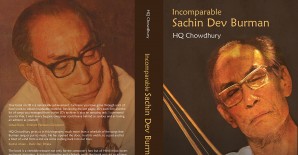
Etcetera

Written all of 50 years ago, Whispering Waves (Yatra Books; Rs 599; 300 pages) by Sita Nanda is a nostalgic piece of writing, documenting the social milieu of upper middle-class life in Bombay in the 1960s. Though Nanda’s attempts at getting her work published back then remained unsuccessful, she dared to dream again, with a little encouragement from family and friends. Now a debutant author at the age of 88, Nanda says it was gratifying to see “my characters come out of hiding”.
Besides being a closet writer, Nanda was also an ardent yachtswoman in her younger days and continues to be a committed yoga practitioner. Indomitable and spirited, Nanda remained a member of the Yachting Association of India Council for almost 20 years from 1970, and was featured many times in Yachting Association of India Journal.
Born in Abbottabad in the North-West Frontier Province, now in Pakistan, Nanda spent her childhood in Uttar Pradesh and went to a boarding school in Shimla. Married at the age of 18, she spent the next 50 years of her life with her husband in Delhi and Nainital. Currently, Nanda lives in New Delhi with her two sons. In an email interview with Srirekha Pillai, Nanda recollects the mores, manners, and memories of a society long gone by. Excerpts:
The love between Gopi and Satish in Whispering Waves is marked by tenderness, so different from the instant gratification of present times. How has the concept of love changed over the years?
Man has always sought gratification, be it for power, riches or sex. The only difference now is that he or she wants it instantly, in a faster moving world. That has made a difference to the concept of love; love has become a misused word for many, and is used for anything you like or enjoy. The love of Gopi and Satish was a compassionate tender emotion, filled with caring and no desire for control over the other. It might be rare in this day and age but I feel it still does exist, in mature younger people. And when it exists, love flows to all it touches. Because it is felt less and less these days, there is so much aggression.
Idealism and patriotism are recurring themes in the book. How much do you feel that we, as a society, have changed?
Our loyalties have shifted from country to caste, religion, relationships and whatever else suits us. Right action needs a certain idealism. I feel that idealism and patriotism have taken a beating because we have become more self-centred in a more competitive world.
Your book is a commentary on the 1950s and 1960s, with ample references to the Chinese aggression of India, poverty in the newly independent nation and Pandit Nehru’s policies. What are your recollections of the same?
Chinese aggression towards India was seen even in the 1950s, on the Northeast borders. In 1962, war was declared between the two countries and Indians responded wholeheartedly to Nehru’s call. They gave what they could, including gold. Despite the then defence minister Krishna Menon being replaced midway because of friction in the party, Nehru remained a popular leader. India withdrew; it lost the war and a lot of wealth that could have helped alleviate poverty at the time. It was, as I remember, then that people started criticising Nehru for being influenced by Menon. Nehru’s popularity and well-being declined. Added to that were the higher taxes that were imposed to make up the shortfall. Wealth tax and income tax became unreasonably high and the image of the government lost its sheen.
There is also a lot of reference to art in the book. Are you a closet artist?
M F Husain, who later became a world-famous painter, was just starting his career when common friends took us to his first exhibition. I think it was in 1963 or the end of 1962. My husband and I were fascinated by his work. Later, we also became friendly with a then well-known artist Shanti Dave and his wife, and art became a part of our life. It brought us joy. We understood the hard work, discipline and creativity it required. But I could never paint.
It is often said that autobiographical elements seep into a writer’s work, especially in debut work. Is it true in your case?
It’s possible that some of the characters in Whispering Waves could have something of me, but I see no autobiographical element.
Your attempt to get your work published abroad almost 50 years ago was unsuccessful. Now, Indian fiction and publishing is thriving, thanks to an interest in hearing our own stories in our own tongue. Do you think Indian fiction has finally come of age?
I think Indian fiction came of age before the end of the 20th century; some authors were also published abroad. Of course, publishing in India is now thriving. A lot has changed in the 50 years since I wrote this book.
Were significant changes made to the initial manuscript before publishing it?
The pages of my initial manuscript were fragile. In 2017, I took them with me to our hill-station home where I go for the summer, to have them retyped. In the process, I did change some paragraphs and rewrote some pages, although the main storyline and characters remained the same.
How does it feel to see your work published after all these years?
The acceptance of my book by a publisher and working with my editor, Neeta Gupta, was an out-of-the-world experience. It was so satisfying when the book was launched and I saw my characters finally come out of hiding!
How did your family support you through all of this?
In 1962, my husband knew I was writing this book and when the rejection letter came from the US publisher, he wiped my tears and tried to cheer me up. The children were young at the time and didn’t know about this. It was only two years ago when I finally gave the book to Namita Gokhale that my two sons, their wives and my two grandchildren were let into my secret. They were very happy to see the book. All of them have read it.
My younger daughter-in-law was instrumental in all this as she had caught a first glimpse of the old manuscript and shared it with a friend of hers, Avantika Sujan, who set the ball in motion. My older son read it in such detail that he caught three typos and marked them for Neeta to correct. My husband would have been so happy to see this book finally in print.
Is there any other story waiting to be told?
Now, it will be difficult for me to work even on short stories and these are the only ones in my mind.
Incidentally, you were the ‘First Lady Councilor’ of the Yachting Association of India. Can you share some memorable yachting adventures?
I started sailing in Nainital. Sailing there, as even others will admit, is an adventure in itself. Winds change frequently, sometimes threatening to capsize your boat and sometimes leaving you with small puffs to move your boat while someone from behind comes with a sudden puff and catches you on the wrong track. Before you realise it, you are out of the race. Then I started sailing in Delhi; the winds were more logical here. We sailed on weekends, there were 17 of us and racing to keep our records intact was in itself an excitement. Then, there were challenges from other clubs in India and regatta time. How we looked forward to our regattas!
You are also a yoga practitioner. What are your tips for keeping fit and ageing gracefully?
Once you have found a good teacher, let her teach you till she thinks you can keep it up on your own. I took lessons initially with a group and got hooked; since then, I do yoga at least five days a week, if not daily. In between, I took a refresher course to check if I was inadvertently making a mistake. In my younger days, I used to dedicate an hour a day to make it part of my life. Now I manage only 15 minutes. I started learning when I was 30 and now I am 89, doing only easy asanas. It teaches you to be aware, to control your breathing and to split your attention between doing an asana and controlling the breathing. People who are self-aware are better able to handle ageing, memory and health-related issues—what more can one ask for!
Photo: Srishti Jha April 2019
you may also like to read
-
Cracking the longevity code
Small yet impactful choices can be game-changers, writes Srirekha Pillai At 102, there’s no stopping Chandigarh-based Man Kaur, the world’s….
-
Home, not alone
While a regulatory framework is vital for senior-care facilities, the need of the hour is to develop an ecosystem to….
-
Birthday Girl
Published in a special edition to honour Japanese master storyteller Haruki Murakami’s 70th birthday, Birthday Girl (Penguin; Rs 100; 42….
-
A huge treat for music lovers
Published as the revised and updated second edition, Incomparable Sachin Dev Burman (Blue Pencil; Rs. 599; 470 pages) the authoritative….








